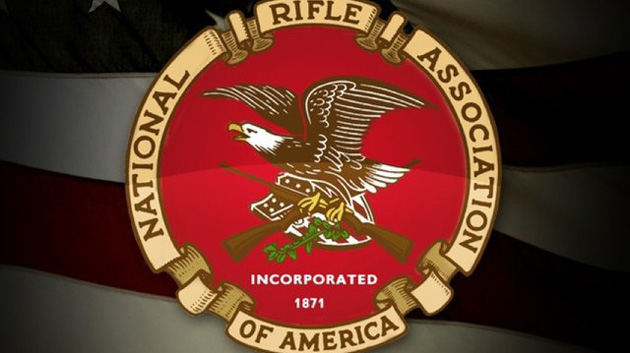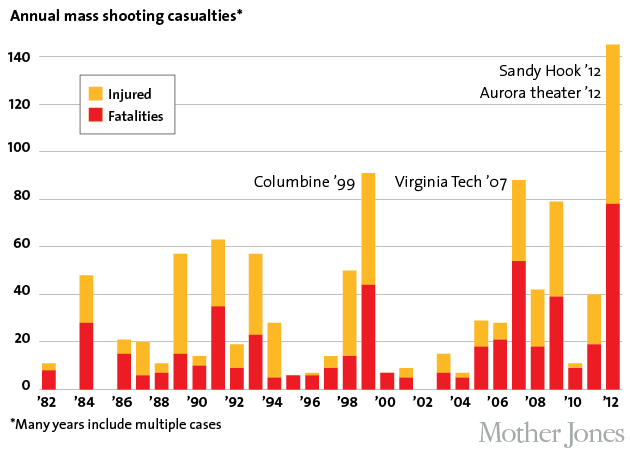Some people are calling the NRA’s new anti-Obama ad a thinly veiled threat against the president’s children. I doubt that this was its intent, but nonetheless, it’s well beyond poor taste to use Obama’s kids to make a point. (And it’s absurd on its face: Like Jenna and Barbara Bush before them, Sasha and Malia get protection at school, as do all US presidents’ children. It’s called the Secret Service.) Between this and the Shooting Range app recently released by the NRA on iOS devices, the lobbying group’s public-relations wing is failing miserably.
Now let’s take a look at the substance of the ad itself: The NRA wants to staff every school in America with armed guards, and the president is “an elitist hypocrite” for being skeptical of the idea.
According to the National Center for Education Statistics, in 2009-10 there were 98,817 public schools, 33,366 private schools, and 6,742 two-year and four-year colleges in America. Assuming that many of the colleges and at least some of the schools already have security and that private schools would require private funding for private security, that still leaves somewhere in the neighborhood of 100,000 schools with no armed security staff.
Hiring an armed guard for each of these would be enormously expensive, especially since these guards would need extensive background checks and would require expensive equipment and training, as well as benefits, pensions, and so forth. While many Americans have indeed expressed support for this sort of measure in recent polling, the public often supports expensive plans with little attention to the cost.
With its argument for getting rid of all “gun-free zones” in the country—which relies on fallacy rather than real data—the NRA has also recommended staffing these 100,000 public schools with armed volunteers: Retired police officers or ex-military types who would bring their guns to schools across the country each day—vigilantes of a sort, with the power of life and death just a trigger finger away.
Of course, assuming we could rally 100,000 full-time volunteer guards (or many more part-time guards) and then vet each of them properly, one has to ask whether we’d trust our nations’ children in their hands. Would these retirees themselves pose some possible danger? Would they be able to stop a shooter should one attack? The armed security at Columbine and Virginia Tech proved incapable of stopping those mass shootings, and shooting rampages have rarely if ever been stopped this way.
The NRA’s anti-Obama ad plays like an election season commercial. But it leaves us with no clear road map toward a solution. The NRA won’t answer the hard questions surrounding gun-free zones because there are no answers. In a country constantly battling over education budgets, it’s simply not possible to arm someone at every school. The suggestions that teachers come armed is perhaps even more of a dead end, as few teachers would want to bear that responsibility to begin with.
In 2012 at least seven major shooting rampages occurred outside of schools. One took place at a crowded movie theater. Another at a public shopping mall. Will the slippery slope that the NRA wants to go down lead to all our public places staffed by armed guards? If these guards are government workers, will this not place more power in the hands of the state—something that many gun owners say is the exact reason they believe in an armed populace?
Whether the gun control measures that Obama is hoping to pass will be successful is an open question. Gun control in a country already so heavily armed may not do as much to prevent mass shootings as gun control advocates hope.
Meanwhile, tackling mental-health-care issues and access to mental-health care especially for young people may be as expensive or even more so than arming security guards at schools. And while it may have a better end-result, we will soon discover that the reality of education funding makes any attempt at creating an efficient, robust mental health program for American schools a truly daunting political task.
Still, it beats buying into the fear. The NRA’s support for more guns makes sense for the lobbying group. More gun sales is always a good thing as far as they’re concerned. But turning our nation’s schools into “gun zones” instead of “gun-free zones” is a step in the wrong direction—a step toward fear and militarization rather than toward hope and progress.















